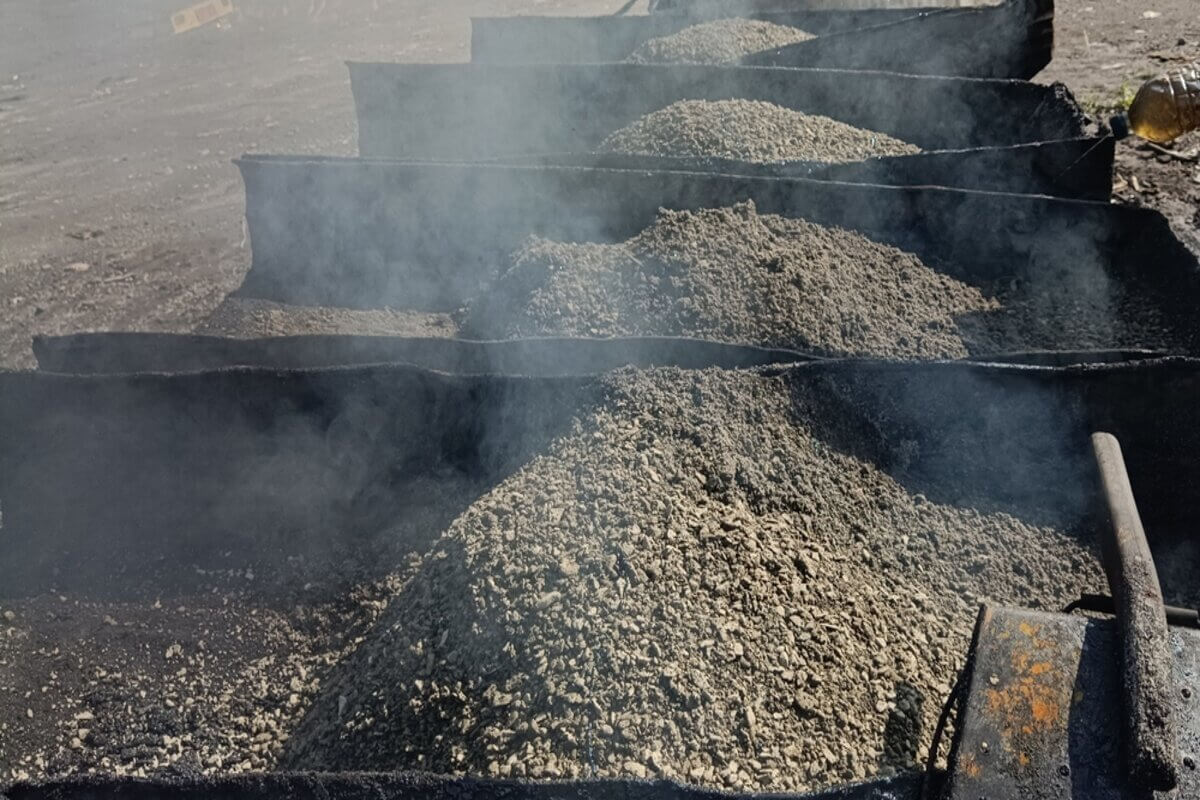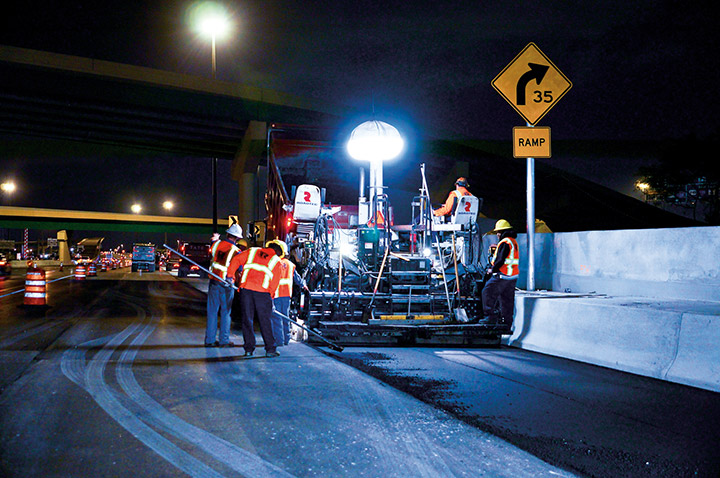Opening the Keys of Warm Mix Asphalt Technology
Exploring the midsts of warm mix asphalt modern technology discovers a world where precise solutions and careful procedures converge to form our roadways and facilities. The fusion of fillers, binders, and accumulations isn't simply a construction job but a critical orchestration of durability and performance.
Significance of Warm Mix Asphalt
Hot Mix Asphalt plays a crucial function in modern framework development because of its resilience and cost-effectiveness. As one of the most typically made use of paving product for roadways, highways, and car park great deals, Warm Mix Asphalt offers a variety of benefits that add to its relevance in construction jobs. One crucial advantage is its ability to stand up to heavy web traffic lots and severe weather, offering a trusted and long-lasting surface for transport networks. In Addition, Hot Mix Asphalt is affordable in both preliminary building and construction and long-term maintenance, making it a favored option for several infrastructure projects.
The longevity of Warm Mix Asphalt stems from its composition, which consists of accumulations, binder, and filler materials that are meticulously chosen and mixed to fulfill certain performance needs. In general, the importance of Warm Mix Asphalt in facilities development can not be downplayed, as it continues to be a keystone of contemporary building and construction methods.
Components of Asphalt Mixes
The structure of asphalt mixes includes thoroughly picked aggregates, binder, and filler products that are essential for attaining certain performance demands. Accumulations are the main part of asphalt mixes, giving strength and security. These aggregates can be natural, such as crushed rock or crushed stone, or artificial, like recycled materials from old sidewalks. The binder, generally bitumen or asphalt cement, holds the accumulations with each other and offers adaptability and resilience to the mix. The choice of the binder is crucial as it directly affects the mix's performance in different climate condition. Fillers, such as hydrated lime or Portland concrete, are made use of to improve the mix's workability and aging resistance. Angled Parking.
The mix and proportion of these components play a significant role in identifying the high quality and efficiency of the asphalt mix. Engineers very carefully create the mix to fulfill details needs, taking into consideration variables like website traffic quantity, environment problems, and sidewalk life expectancy. Appropriate choice and balancing of aggregates, binder, and fillers are important for creating durable, lasting asphalt pavements.
Mixing and Manufacturing Strategies

Once the aggregates are selected, the binder, typically asphalt cement, is included to bind the materials together. The binder's high quality and quantity substantially influence the mix's resistance, versatility, and stamina to environmental elements. Furthermore, fillers like hydrated lime or Portland concrete might be integrated to improve particular qualities of the asphalt mix, such as its workability or moisture resistance.
Throughout manufacturing, the accumulations and binder are heated up, usually between 250-325 ° F(121-163 ° C ), to facilitate blending and make certain appropriate finishing of the aggregates. The mixing procedure needs to be extensive to achieve a homogeneous combination that promotes the desired efficiency attributes of the asphalt. Different techniques, such as set mixing or drum blending, are utilized to accomplish top notch and constant asphalt blends for building jobs.
Factors Influencing Asphalt Performance
Variables influencing asphalt performance incorporate a range of variables that affect the durability, durability, and total quality of asphalt pavements. One crucial variable is the quality of materials utilized in the asphalt mix.

Environmental problems also affect asphalt efficiency. Temperature variants, wetness seepage, and traffic lots can all impact the architectural integrity of the pavement. Layout considerations, such as sidewalk thickness and drain, are essential in guaranteeing the lasting performance of the asphalt sidewalk. By carefully thinking about these variables, engineers and specialists can optimize asphalt performance and improve the life span of sidewalks.
Sustainable Practices in Asphalt Technology

In addition, the advancement of warm-mix asphalt (WMA) innovations has gained grip in recent times. WMA enables the manufacturing and positioning of asphalt blends at lower temperature levels contrasted to standard hot-mix asphalt, leading to decreased energy intake and greenhouse gas discharges. Additionally, making use of permeable asphalt blends can help mitigate stormwater drainage problems by allowing water to penetrate with the pavement and right into the ground, promoting all-natural water filtering and recharge procedures. By executing these lasting methods, the asphalt sector can add to building an extra eco-friendly and resilient infrastructure network.
Final Thought
In final thought, warm mix asphalt modern technology plays an essential function in contemporary commercial parking lot paving framework growth as a result of its durability and cost-effectiveness. By thoroughly balancing elements, utilizing correct blending strategies, and taking into consideration numerous variables, designers can develop high-quality asphalt mixes that withstand heavy traffic loads and harsh weather. Welcoming lasting techniques, such as making use of warm-mix innovations and recycled materials, even more enhances the environmental kindness of asphalt modern technology.
Blending and production techniques in warm mix asphalt modern technology include the accurate combination and handling of accumulations, binder, and fillers to produce a resilient and high-performance asphalt mix.Variables affecting asphalt performance encompass an array of variables that linked here affect the sturdiness, longevity, and total high quality of asphalt pavements. Lasting methods in asphalt technology incorporate different initiatives intended at minimizing the environmental influence of asphalt production and paving procedures. By integrating reclaimed asphalt sidewalk (RAP) and recycled asphalt roof shingles (RAS) right into new asphalt blends, the market can significantly lower the usage of raw products and energy, while additionally reducing landfill waste.
WMA enables for the manufacturing and placement of asphalt blends at lower temperature levels compared to typical hot-mix asphalt, resulting in decreased power consumption and greenhouse gas exhausts.
Comments on “Hot Mix Asphalt Paving: Your Entrance to Premium Angled Parking Solutions”